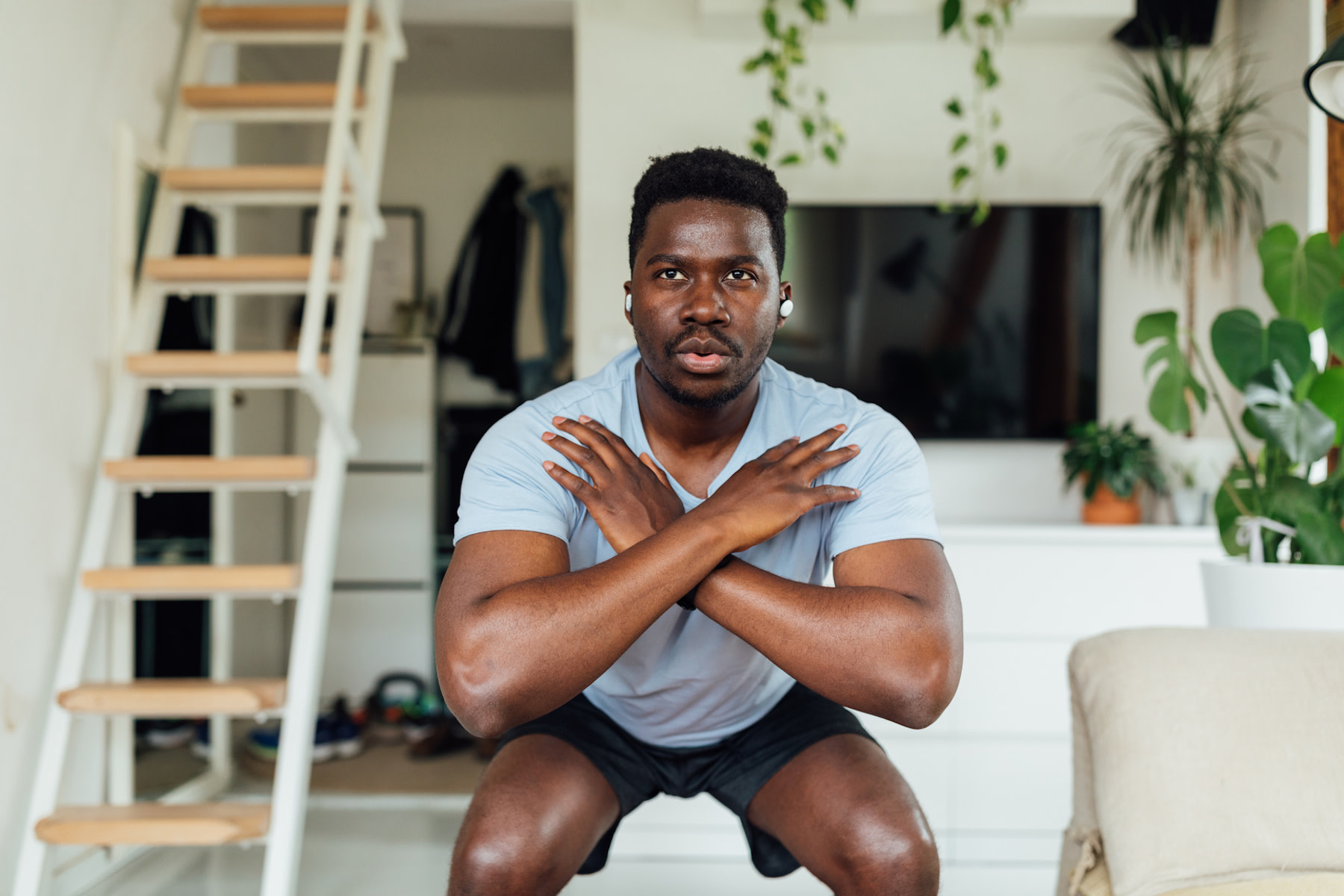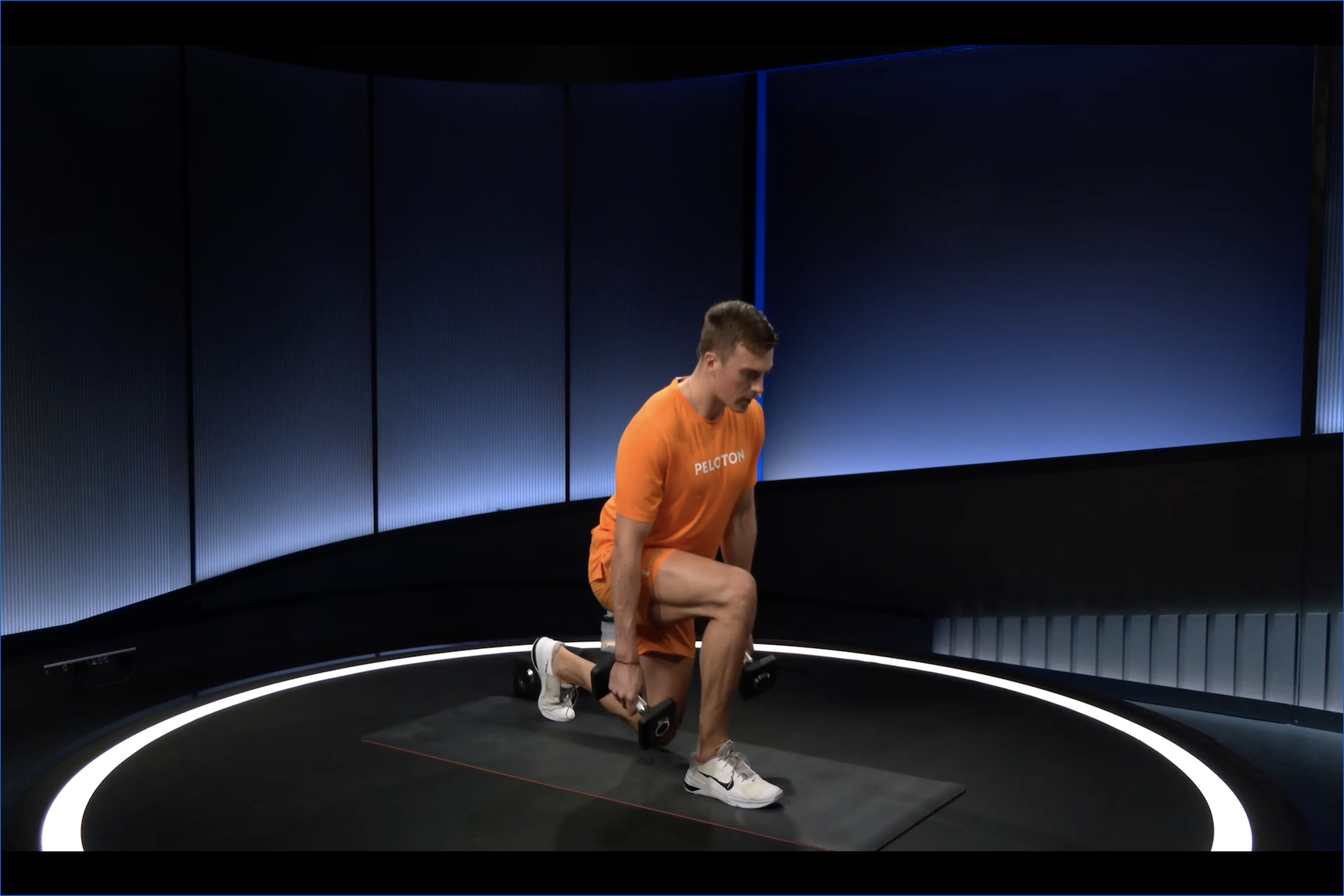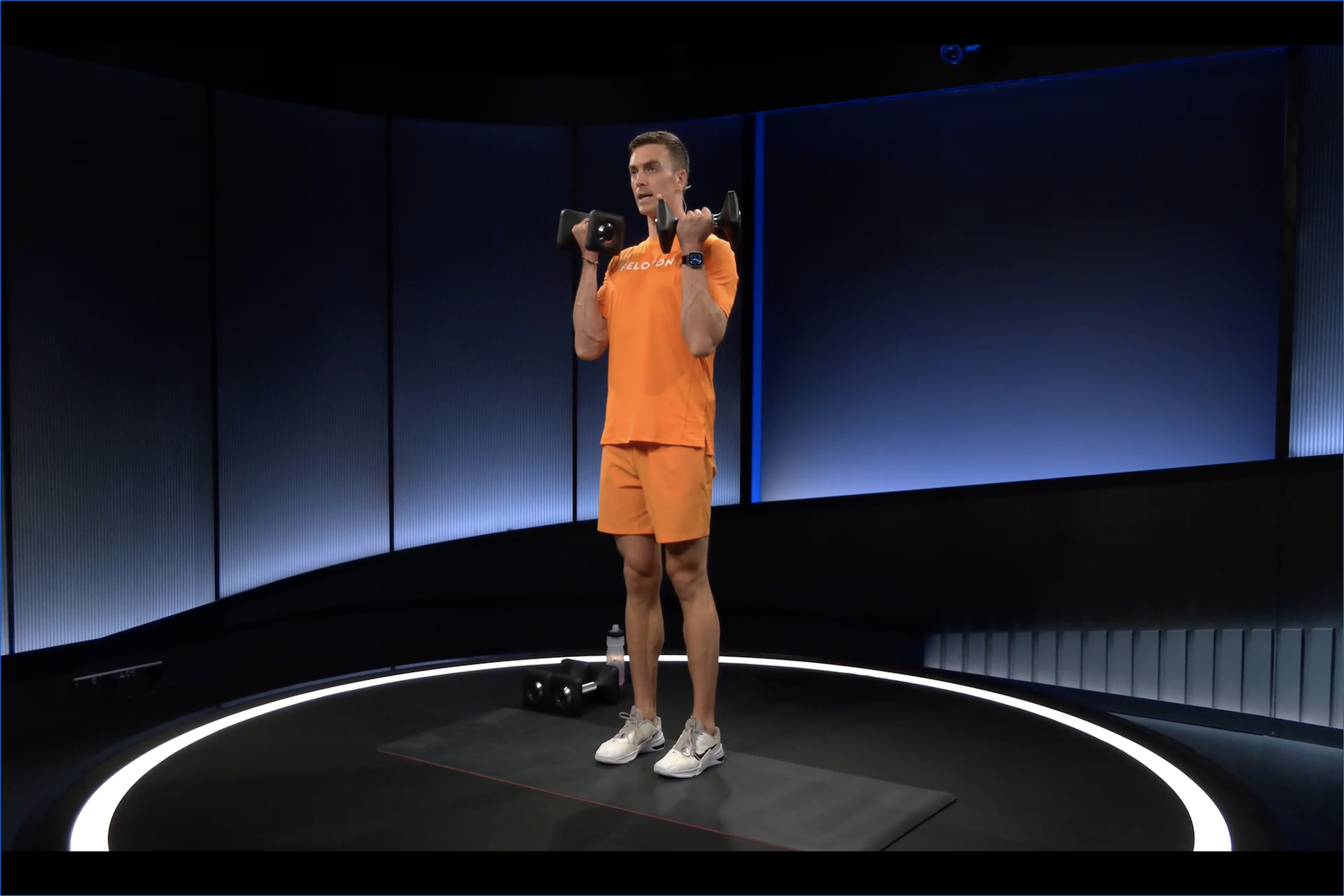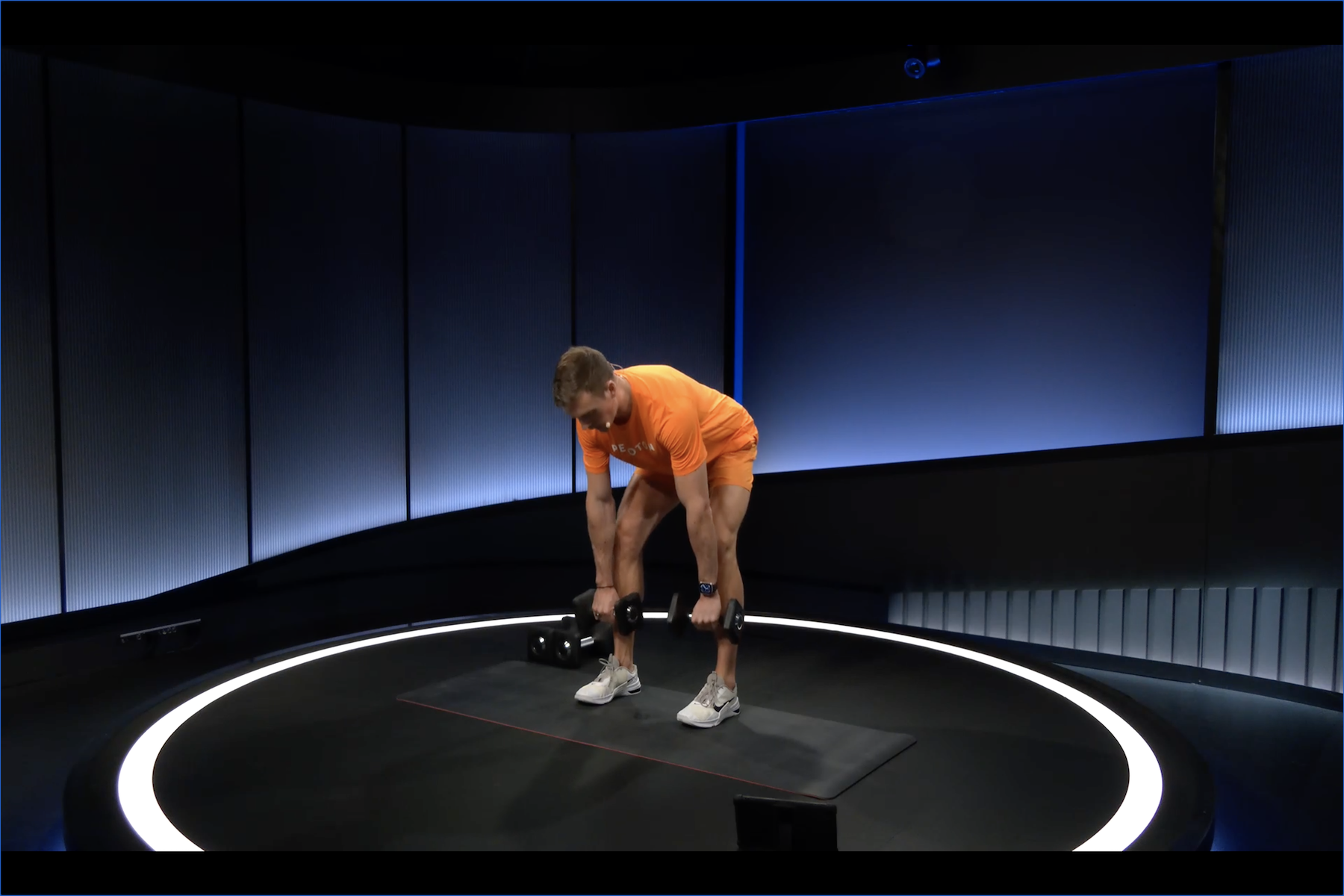
10 Strength Training Exercises for Triathletes
It's time to add these movements into your workout regimen. Here's why.
By Eric Arnold•
The Benefits of Incorporating Strength Training
The Key Muscle Groups Triathletes Should Work
10 Types of Strength Training Exercises for Triathletes
How Often Should Triathletes Strength Train?
The Takeaway
There’s a common saying among triathletes on race day: “Swim like you’re being chased like a shark, bike like you stole it, and run like Forrest Gump.” You may want to add an additional phrase to that list: tap into your strength training gains. Of course, you still need to spend the bulk of your training time swimming, biking, and running, but regular weight sessions will boost your performance on race day.
The Benefits of Incorporating Strength Training
The best way to think about the value of strength work is, simply, that it plays a supporting role, making you more resilient while training—and on race day.
“No amount of strength training can replace the swimming, biking and running you need to do to perform well,” says Peloton instructor Matt Wilpers, who’s no stranger to triathlons. “Instead, it’s about using strength training to complement and maximize the yield from your training sessions by improving performance and avoiding injuries.”
Intentionality is key. Instead of cycling through any and all of the exercises you’re in the mood to do, focus on the specific muscles that play a role in triathlon performance. Sure, being able to bench press your own bodyweight is an accomplishment, but it’s not necessarily going to help you in the pool or on the road.
The Key Muscle Groups Triathletes Should Work
How much of a boost you’ll get from this type of exercise varies, Matt says. However, if you effectively integrate strength training into your routine, he predicts you can expect to see a 10 to 20 percent bump in your performance. For Matt, these efforts go beyond improving his output. “[It’s] about feeling stronger, more healthy and more confident in my body in every training session,” he says.
When strength training as a triathlete, it’s critical to focus on the muscle groups associated with the repetitive motions of each of the three disciplines. For example, consider the rotation of your shoulder during the reaching-and-pulling motion of the freestyle stroke while swimming. To aid this movement, you’ll want your strength training to target your shoulders, chest, and arms.
For the biking portion, focus on your hip flexors, but also your core, which helps you maintain proper form on the bike. Holding the correct posture on the saddle allows you to get the maximum power out of each pedal stroke.
While much of the strength work you do for cycling also applies to running, you’ll need to add additional exercises to account for the impact of your foot hitting and pushing off of the road with each stride. That’s important for both injury prevention and your performance.
However, the most important thing to remember about strength training as part of triathlon preparation is that you’re trying to enhance your swimming, biking and running endurance, not impede it. “The logistics are everything,” Matt says. “Strength training needs to run parallel and be specific to complementing your primary training—swimming, biking and running.” That means integrating strength training into your schedule in a way that doesn’t compromise what you’re trying to achieve in the race. “It’s got to be simple and achievable,” he says.
10 Types of Strength Training Exercises for Triathletes
Regardless of whether you’re a novice or just completed your ninth triathlon, you can cycle through the same type of strength training exercises.
Much of your strength training should take place in the off-season, when you’re not even thinking about your next triathlon. If your strength is dialed up before training season even begins, you’ll have a fitness baseline that will lend more energy to your preparation sessions. The closer the race gets, the more you should dial back your strength work.
With that in mind, here are 10 types of exercises to work into your training regimen—and when to do them.
1. Crunches and Planks
Area of focus: Core
Why: Core exercises establish your foundational strength and stability. This is especially important for biking but also to protect your lower back. As little as five minutes of core work per day can make a difference.
When: Early in the season and during the off-season

2. Lunges
Area of focus: Lower body
Why: Lunges build the strength and stability you need for the repetitive motions of biking and running. Regardless of whether you opt to add free weights to this movement or complete them with your own body weight, make sure you're maintaining proper form. If you do add weights, hold 15 or 20-pound dumbbells in each hand while lunging.
When: Early in the season and during the off-season
3. Squats
Area of focus: Lower body, core
Why: Squats are a simple exercise that help you become a stronger swimmer, rider, and runner. In this movement, you not only work your quads and glutes, but also your core and lower back. To progress this exercise, vary the type of squat you practice to target different goals. For example, with single-leg squats, you’ll improve your balance and stability.
When: Early and in the middle of the season

4. Rows
Area of focus: Chest, back
Why: Rows, as well as other types of chest and back exercises, build the strength you need in your pectoral and scapula muscles for maintaining a good, steady stroke while swimming.
When: Early in the season and during the off-season
5. Front and Lateral Raises
Area of focus: Shoulders
Why: Any swimmer will tell you that front and lateral raises are an essential aspect of dryland training. You’ll maintain an efficient and effective freestyle stroke by building shoulder strength.
When: Early in the season and during the off-season

6. Curls
Area of focus: Biceps
Why: Most swimmers will tell you that they typically neglect bicep work—except for freestylers. However, make sure not to overdo it with heavy dumbbells in this movement. Use just enough weight to establish basic strength and stability.
When: Early in the season and during the off-season
7. Kickbacks or Overhead Extensions
Area of focus: Triceps
Why: Don’t make the mistake of neglecting this critical arm muscle. Your triceps are essential to your swimming and biking. In the water, they aid the reaching motion made with each stroke. On the bike, they support your upper body on the handlebars, giving you the strength to stay upright and maintain good form.
When: Early in the season and during the off-season

8. Deadlifts
Area of focus: Quads, glutes, and lower back
Why: To build strength in your lower back, quads, and glutes, turn to deadlifts. Keep the weight on the lighter side and focus on your form. This exercise will build stability and balance in your lower back and knees, which is critical for any runner.
When: Early in the season and during the off-season
9. Kettlebell Swings
Area of focus: Full body
Why: Kettlebell swings engage multiple muscle groups in a singular movement, allowing you to simultaneously build strength and power. Opt for a weight on the lighter side to protect your lower back and avoid overworking your shoulders.
When: During the season
10. Calf Raises and Pogos
Area of focus: Joints (ankles and knees)
Why: Ankle strength is essential for maintaining your balance and stability. Try calf raises to strengthen your ankles and pogos (jumping forward, backward, and side to side) to support your knees and ankles. These motions will help prepare your joints for the impact of running, as well as prevent potential training injuries.
When: Early in the season and during the off-season
You can find most of these moves, as well as other beneficial strength training exercises for triathletes, on the Peloton App.
How Often Should Triathletes Strength Train?
As a triathlete, the most important thing to keep in mind when strength training is restraint. Constant swimming, biking, and running is time-consuming and hard on your body. Adding strength training into the mix can do more harm than good if you aren’t methodical in your approach.
“More general cross-training that includes a mix of strength and cardio is likely better placed in the off-season as a way to build general fitness while taking a mental and physical break from the stresses of in-season training,” Matt says. That doesn’t mean you should cut off all of your strength training as race season approaches, but you’ll definitely need to scale it back—only working through these exercises once or twice a week. And maintaining mental focus is essential.
“During your strength sessions, focus on transitioning strength [that you] previously gained into power while continuing mobility and stability exercises,” Matt says. “Do this with an emphasis on feeling race ready versus building fatigue.”
In other words, your triathlon strength work should perk you up rather than have you collapsing in a puddle. While you can do these workouts on the same days that you swim, ride, or run, it’s better to stagger them. But if you’re pressed for time and have to hit the weight room the same day that you’re in the pool, on the bike or out running, be sure to make room for a rest day so that your body can fully recover.
The Takeaway
Nobody said that training for a triathlon is easy. In fact, the hardest part may be finding the time, so the idea of adding strength training into the mix may sound like a step too far. But if you develop a training plan that dials down the strength work as your swimming, biking, and running efforts increase, the schedule should be manageable.
This content is for informational and educational purposes only and does not constitute individualized advice. It is not intended to replace professional medical evaluation, diagnosis, or treatment. Seek the advice of your physician for questions you may have regarding your health or a medical condition. If you are having a medical emergency, call your physician or 911 immediately.


